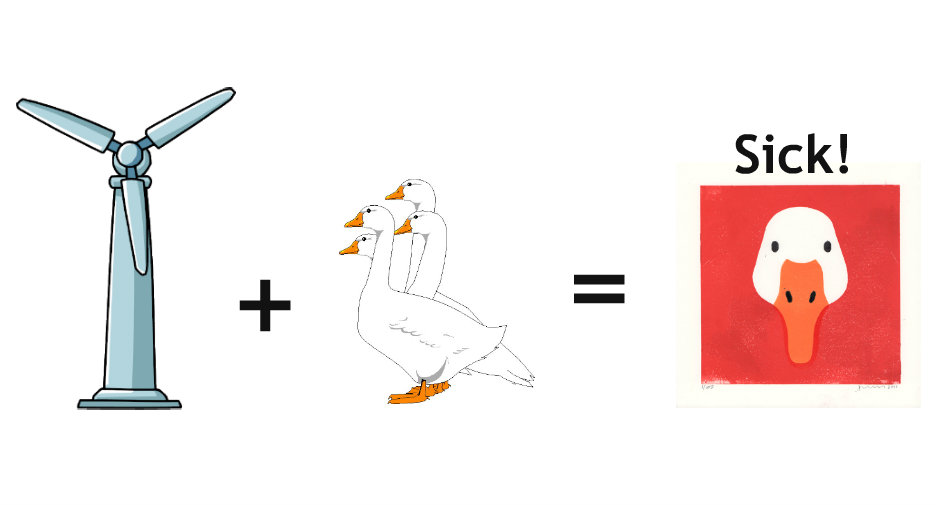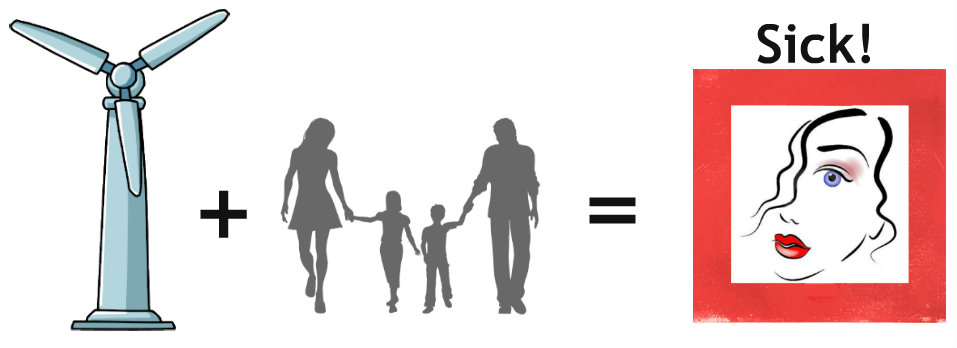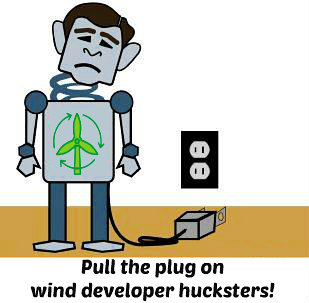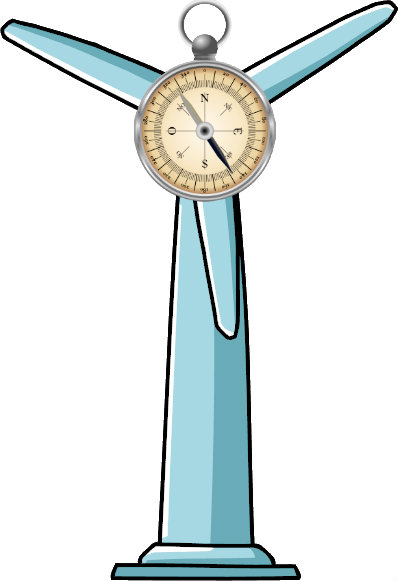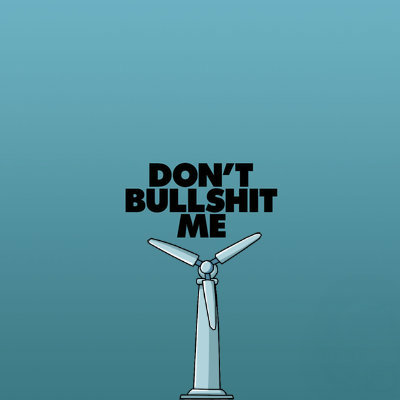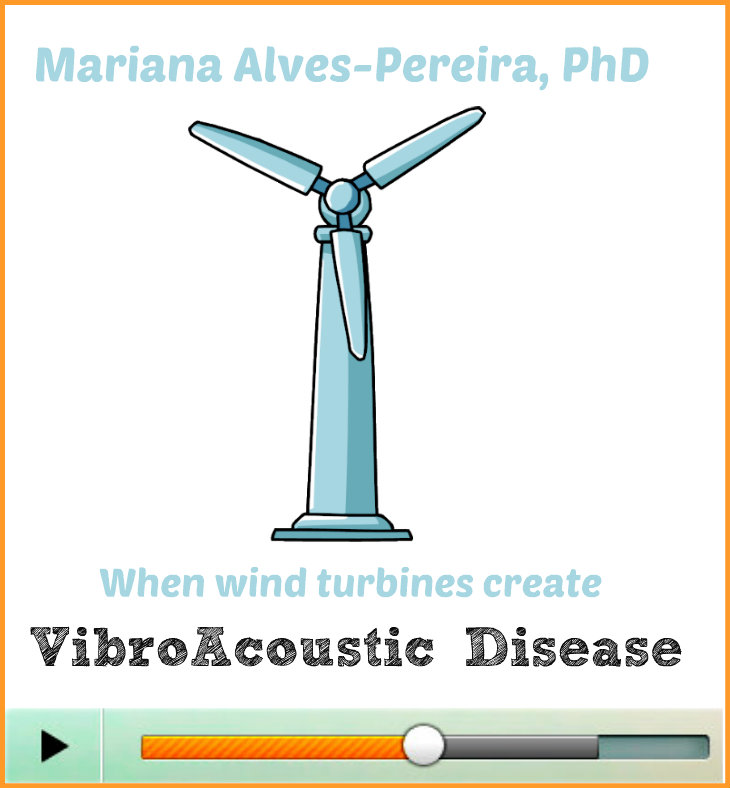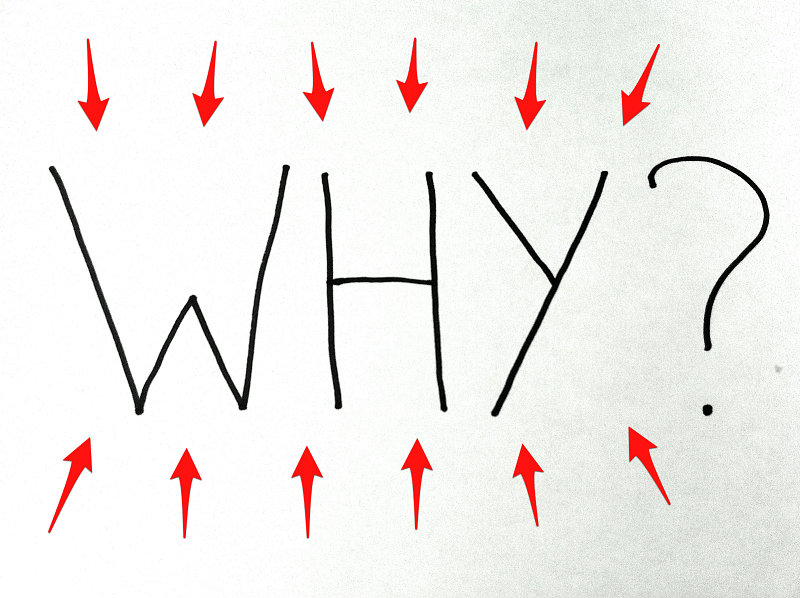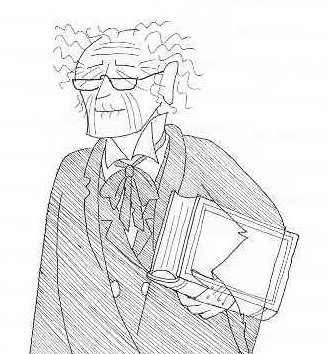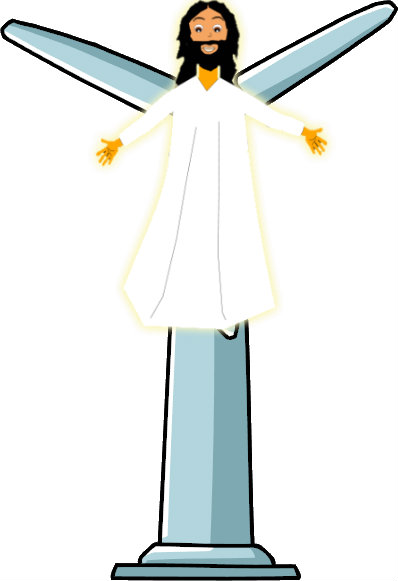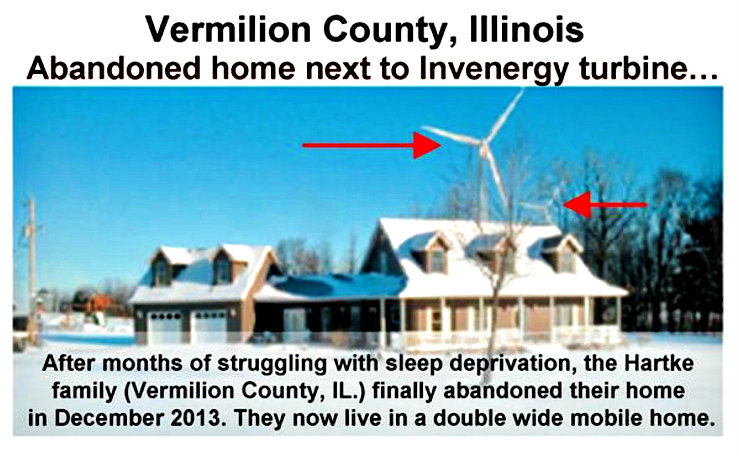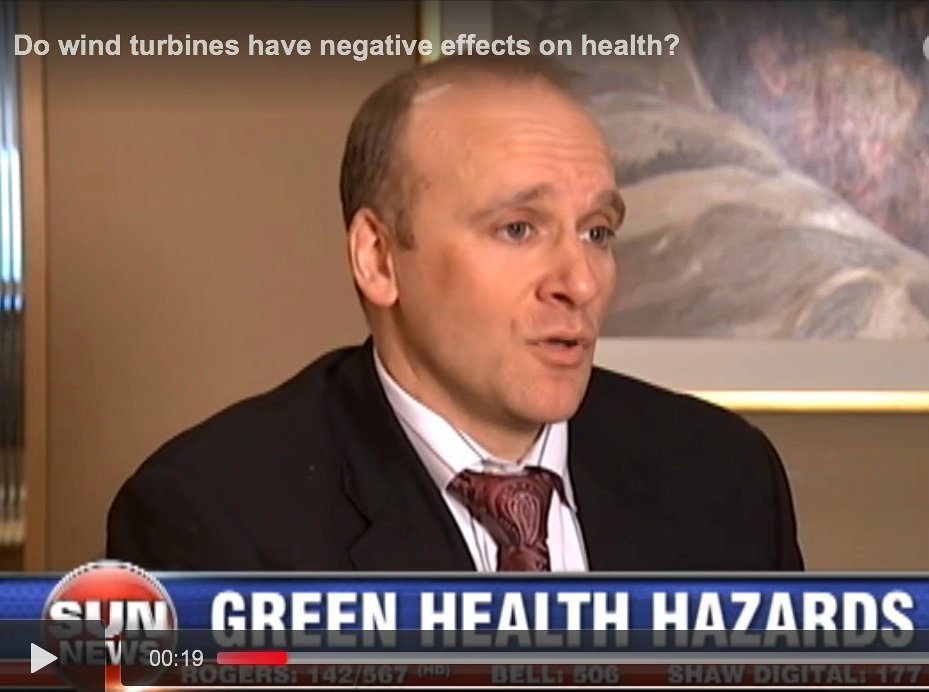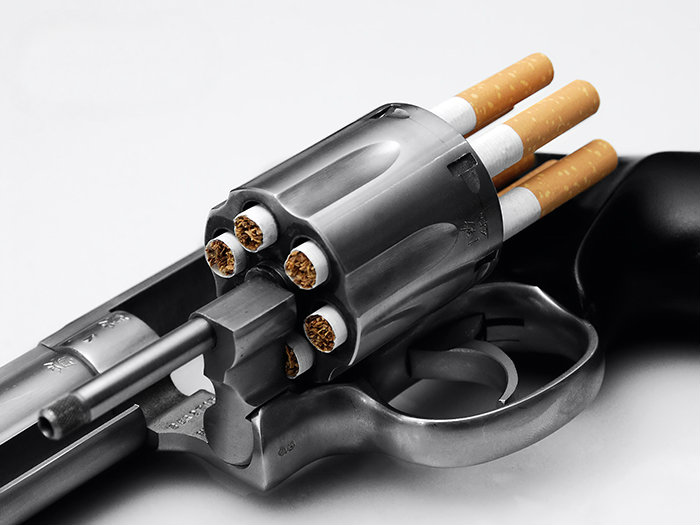
— Curt Devlin, Guest Editor
Faced with growing evidence that industrial wind turbines (IWT’s) cause serious adverse health impacts, comparisons between the wind industry and the tobacco industry are getting more obvious all the time. The Big Wind tactics of stalling, dismissing legitimate concerns, and outright denial of the link between turbines and health problems seem straight out of the Big Tobacco playbook.
Perhaps this pattern is standard behavior for dirty industries, especially when there is no easy way to acknowledge the harm they cause without damaging profits as well. Despite these similarities, there are also fundamental differences between these two industries, the problems they create, and how they create them. Anyone looking to hold Big Wind accountable for the havoc it creates should pay careful attention to these differences as well. Forewarned is forearmed.
Before it was known that cigarette manufacturers were chemically enhancing the addictive properties of its product, they often argued that smokers had the choice to stop. They insisted that they could not be held responsible for personal choices made by smokers. Whether true or not, the idea that smokers could opt out at any time was a powerful persuasion on public opinion. By contrast, once an industrial-scale wind turbine begins to spin in your neighborhood, there is no chance for anyone to opt out. The wind industry is always quick to point out that a vote was taken to accept a particular wind project — but the fact that no one was told just how dangerous industrial turbines are, is never mentioned. In any case, the perverse idea that a majority of voters have the right to impose harm on a minority belongs more to fascism than democracy.
Making the scientific link between cigarette smoking and its more egregious health impacts, such as lung cancer and vascular disease, was a long, slow process due to the nature of these diseases and how they must be studied. The link between wind turbines and their most immediate health impacts, however, can be established much more directly and swiftly, by using a different methodology. How the link to adverse health impacts is made is a difference worth exploring.
Making the Link
When public attention first turned to smoking as a health hazard, the tobacco industry tried to defend itself by pointing to the fact there were no large cross-sectional studies that “proved” a direct causal connection between smoking and illness. Making a causal link between a health hazard and its impact can be difficult, costly, and time-consuming. As a result of these obstacles, Big Tobacco was able to hold its critics at bay for decades. The strategy of insisting on almost absolute certainty, something that cross-sectional studies are not designed to furnish in any case, also provided Big Tobacco with the time it needed to mount a massive PR campaign and aggressively lobby policymakers for legal protections. Meanwhile, despite public posturing to the contrary, Big Tobacco knew full well just how dangerous and addictive its product truly was.
The fact that tobacco taxes have been a mainstay of state and federal revenues for more than a century made it easy to convince lawmakers to protect the industry. Similarly, Big Wind’s call for indisputable certainty about turbine health impacts has bought years for its epic lobbying campaign to extend the wind production tax credits (PTC), its only source of financial sustenance in the U.S. By contrast, however, the PTC amounts to nothing more than a government subsidy to big business. Similar subsidies exist in many other countries as well. Economically, wind turbines have been a corporate drain on taxpayers and ratepayers alike. Unlike tobacco, wind energy is simply not a self-sustaining industry. Now that the PTC has finally been abandoned in the U.S., the wind industry is already looking toward developing countries as a market for it dangerous product—just as the tobacco industry did when its domestic market began to contract.
Cross-sectional studies are an excellent delaying tactic, but they are not equally well-suited for studying all forms of health impacts. They are designed to compare two groups of people based on a single variable that makes them different, such as smokers versus non-smokers. Though such studies don’t actually lend themselves to determining causal links in a rigorous scientific sense, they can provide powerful and convincing statistical links known as correlations. We now know, for example, that smoking correlates very highly with lung cancer and vascular disease—even though we still do not fully understand many of the details about “how” it causes morbidity.
At first glance, smoking seems to be a good candidate for cross-sectional study, because separating smokers from non-smoker seems straight forward enough. In time, however, researchers realized that this is not as easy as it sounds due to the complicating factor of secondhand smoke. Many “non-smokers” were actually inhaling large quantities of secondhand smoke at home, in the office, and in public places like bars and restaurants. Until laws were passed to prohibit smoking in public, many so-called non-smokers were passively inhaling a substantial cigarette smoke every day. Once researchers began to control for secondhand smoke (by eliminating subjects who were heavily exposed to it), the link between smoking and morbidity came into sharp relief.
Health issues like those caused by turbines, however, are even more difficult to study using a cross-sectional methodology because it is almost impossible to separate those who are exposed and those who are not. Cross-sectional studies connecting wind turbines to adverse health effects such as sleeplessness have been done in a few cases, but these tend to produce weaker links (Nissenbaum 2012). The problem is somewhat similar to that of secondhand smoke. Much of the harm caused by turbines comes from the low and very low frequency noise they emit. This combination is sometimes referred to as infrasound and low frequency noise, or ILFN. Extensive research shows that ILFN can cause a wide range of health impacts because it adversely effects the whole body—not simply the ear.
Much like secondhand smoke, therefore, the problem is that ILFN is everywhere. Virtually everyone is constantly being exposed to it because at least some form of low frequency noise is produced by so many natural and man-made sources other than turbines. Fairly intense low frequency noise can be found inside cars, buses, trains, planes, and trucks. It is also produced by industrial air compressors, some electrical motors and many other forms of industrial equipment, such as large HVAC (heating, ventilation, air conditioning) fans and industrial air scrubbers. In fact, residential homes were one of the few remaining places of refuge from this onslaught of low frequency noise—until the wind industry began moving into residential neighborhoods. For these homes, there is no respite. Worse yet, many residential structures actually amplify ILFN, making it more intense indoors. It is nearly impossible for researchers to find a group of people who are completely free of ILFN exposure. Without this control group as researchers call it, how can a cross-sectional comparison be made between groups who are exposed and those who are not?
Case Series Crossover Studies to the Rescue
Fortunately, there are other perfectly valid and well-accepted methodologies for making reasonably precise comparisons in situations like this. One such methodology is called a case series crossover study, or sometimes simply a crossover study. This methodology has been widely used for many years in public health, population biology, occupational, and environmental studies like this. When conducted with care and rigor, crossover studies can identify connections between adverse health impacts and sources which are otherwise hard to identify.
A crossover study is a very elegant and powerful technique for making comparisons over time. Instead of comparing two separate groups of subjects like a cross-sectional study, a crossover study compares each subject in the experiment to himself or herself at different times or phases. In the case of turbine noise, for example, subjects can be compared to themselves before, during, and after exposure to wind turbines.
This is precisely why Dr. Nina Pierpont (who is both an MD and a PhD in population biology) chose the case crossover technique for the landmark study reported in her book, Wind Turbine Syndrome: A Report on a Natural Experiment (2009). In the non-clinical chapter of her report, she wrote:
First, to call this a wind-turbine associated problem at all, I compared how people were during exposure to how they were when not exposed, and I specified that “not exposed” meant both before and after living near turbines. All my subjects saw their problems start soon after turbines went online near their homes, and all saw their problems go away when they were away from the turbines [author’s emphasis] (Pierpont 2009).
Given this evidence, what conclusion would you draw? Those who have experienced new symptoms firsthand when turbines start spinning near their homes, also soon discovered that these same symptoms disappeared when they got away from the turbines. They quickly came to the same conclusion as Pierpont did, entirely on their own. For them it wasn’t necessary read Wind Turbine Syndrome to identify the source of their health problems; it was obvious from the outset. Many of those directly affected are so certain, in fact, that they have voted with their feet, by abandoning their homes to find a place of refuge far from any turbine. Science and commonsense have come to the same conclusion about the dangers of living near turbines.
This is a very different experience from that of smokers. In the past, smokers themselves often did not believe their daily habit was ruining their health. In fact, the media was constantly reassuring them that smoking was both healthy and glamorous. Unlike wind turbine syndrome, the progression of cancer and heart disease caused by smoking is so slow and imperceptible that victims often don’t notice until it is too late. How often have you heard a smoker say “I’ve been smoking for years and it hasn’t bothered me at all?”
Identifying the Moment of Incidence
Not every disease or condition can be studied using the crossover approach. For instance, diseases such as lung cancer and heart disease cannot be studied this way, for two important reasons. First, these diseases develop so gradually and imperceptibly that science cannot reliably determine when they first began. A rigorous crossover study must be able to identify what medical researchers call the moment of incidence, the moment when a symptom or condition begins. Unless this moment can be determined with some accuracy, a crossover study cannot link an adverse health effect to a specific source at a particular time.
Secondly, some conditions, such as lung cancer and heart disease, are often irreversible. Lung cancer, for instance, does not disappear simply because you stop smoking. It would be absurd to claim that smoking does not cause cancer simply because it doesn’t go away when a smoker quits. A crossover study would not be effective for studying the health impacts from smoking. By contrast, many of the earliest health effects associated with wind turbines quickly subside or disappear completely when turbine exposure stops. This makes the crossover methodology an excellent choice for studying the relationship between wind turbine noise exposure and its symptoms.
It is important to realize that science does not need to study the symptoms of wind turbine syndrome for decades to accurately determine the source of the problem. When precisely controlled comparisons are made using the case crossover approach, the link between industrial wind turbine noise and its most immediate detrimental health effects is clear and compelling.
When two 1.5 Mw turbines were sited in a dense residential neighborhood in Fairhaven, MA (Methia 2013) two years ago, some of the residents began experiencing sleep disruptions, intense headaches, and dizziness almost immediately. Proponents of the wind project tried to deflect blame for these problems by suggesting that they were caused by the large HVAC fans on the back side of the nearby Stop & Shop. The trouble with such explanations is that the HVAC fans had been operating there for several years, generating few complaints. By emphasizing the proximity in time between the source and symptoms at the moment of incidence, case crossover data can establish compelling evidence against the real culprit, and clearly distinguish the true source of the problem—the introduction of nearby industrial turbines into a previously quiet neighborhood.
Despite this intuitively obvious fact, many neighbors in towns like Fairhaven, Falmouth, and Scituate in Massachusetts, who have not felt any immediate impact, believe they are completely safe. Wind advocates often cite this as evidence that the turbines are not the problem. The best available scientific evidence suggests, however, that those who think they are unaffected are making a very bad—possibly deadly—mistake.
Eventually Everyone Is Affected
Ominously, studies which have focused on the health impacts from long-term exposure to low frequency noise, much like studies on long-term smoking have demonstrated that it leads to diseases which are debilitating, eventually irreversible, and sometimes fatal.
In fact, long-term exposure to intense low frequency noise has been linked to chronic diseases similar to those caused by smoking, such as cancer and heart disease. Like Big Tobacco, it is easy for Big Wind to be dismissive about these findings because the early stages of these diseases are often asymptomatic. You can almost hear a slightly distorted echo of the smoker’s bravado: “I’ve been living near big turbines for years and I feel just fine! It doesn’t bother me.”
The wind industry has seized upon the common misconception that sound energy only impacts the human ear. If infrasound cannot be heard, then it cannot harm you, right? This dangerous misconception has been flatly contradicted by the work of Dr. Alec Salt, an otolaryngologist in the School of Medicine at Washington University in St. Louis, Missouri. Salt has demonstrated that sound frequencies below the threshold of hearing have direct impacts on the inner ear (vestibular organs) and cause signals to be sent to areas of the brain other than the hearing center (Salt, Responses of the Ear to Infrasound and Wind Turbines, 2010). He has also shown that these signals rise to a level 4X the loudest audible noise, making the human extremely sensitive to infrasound (Salt, Turbines can be Hazardous, 2013).
Beginning in 1980, two Portuguese researchers, Nuno Castelo-Branco, MD, and Mariana Alves-Pereira, PhD, who have been studying the long-term health impact of ILFN on both humans and animals for over three decades now, began demonstrating that intense low frequency sound and vibration have highly destructive impacts on the entire body, known collectively as vibroacoustic disease or VAD. In a co-authored paper based on their study, they reported that:
The autopsy findings of thickened cardiac structures led to the echocardiographic study of the population of aircraft technicians. All had thickened pericardia, and many also exhibited thickened cardiac valves (Marciniak et al. 1999). Pericardial thickening among LFN-exposed individuals has been anatomically confirmed through light and electron microscopy studies of VAD patient pericardial fragments (collected with patients’ informed consent, during cardiac bypass surgery received for other reasons) (Castelo-Branco et al. 1999a, 2001, 2003a,b; Castelo-Branco 2004).

All 140 of their subjects showed signs of dangerous and sometimes lethal thickening of the tissue in and around their hearts after long exposure to low frequency sound and vibration at work—the same kind of sound and vibration produced day and night by wind turbines. Unfortunately, this thickening can become life-threatening with little or no warning for the victim. This same study also reports that 100% of the subjects suffered from some form of cognitive impairment, noting that “delays in multi-modal evoked potentials (including endogenous), observed in all 140 patients, are a sign of progressive neurological deterioration and early aging process” (Castelo-Branco 2004). In other words, after sufficient exposure to ILFN, virtually everyone is affected.
In case a finding of premature aging in every subject is not disturbing enough, they also found that more than half their subjects developed bronchitis whether they smoked cigarettes or not. Half or more also developed headaches, nose bleeds, and balance problems such as vertigo and dizziness—many of the same hallmark symptoms reported by Pierpont in Wind Turbine Syndrome. It is worth noting that the occupational pattern of exposure in the Portuguese study is an excellent way to gather crossover data. The report notes, for example, that many of these symptoms subsided or disappeared when technicians went home for the day. Ironically, those who are most affected by early symptoms may be the lucky ones if it forces them to get away from the source before the worst effects take hold.
Castelo-Branco and Alves-Pereira also found 22 cases of late-onset epilepsy among the technicians (Castelo-Branco 2004). The development of even one or two cases among adults would be disturbing enough, since this form of epilepsy rarely occurs after about ten years of age. Twenty-two cases represents a startling 20-fold increase over the occurrence in the general Portuguese population.
In addition, this team also was able to directly observe the destruction of healthy cells in tissue samples under an electron microscope. Apparently, the biomechanical force of low frequency vibration can cause healthy cells to burst like water balloons after being squeezed one too many times. The abnormal destruction of otherwise healthy cells throughout the body can be a precursor to various autoimmune diseases, as well.
In short, research out of Portugal confirms that exposure to ILFN has impacts throughout the human body. The greater the exposure, the more severe the morbidity.
If you are wondering whether industrial-sized turbines can produce the same health impacts as found among the aircraft technicians, Alves-Pereira and Castelo-Branco subsequently extended their study of ILFN to families and horses living near such turbines (Alves-Pereira 2006). They used similar techniques, such as echocardiographs and brainstem auditory evoked potentials. Predictably, they found health effects very similar to those found in their seminal study of aircraft technicians. One can only imagine how quickly illness will occur when someone spends all day in an ILFN-rich work environment, only to come home at night to a barrage of low frequency noise and vibration coming from a nearby complex of industrial wind turbines.
When long-term morbidity from Big Wind and Big Tobacco is considered carefully, the two industries appear to have more in common than either would like to admit. When you consider the wind industry’s increasingly desperate denial of a large and growing body of evidence from experts in clinical and acoustic research, showing that wind turbines make people very sick — it’s hard to ignore the mirror image of Big Tobacco’s response to evidence that smoking is disastrous to health.
.
References
Alves-Pereira, C.-B. (2006, Aug 4). Vibroacoustic disease: Biological effects of infrasound. Lisbon, Alverca, Portugal: ScienceDirect. Retrieved from http://nmcares.pbworks.com/f/AlvesPereira2007%20Vibroacousticdisease:biologicaleffectsofinfrasound.pdf
Castelo-Branco, A.-P. (2004). Vibroacoustic disease. Noise Health [serial online], 6:3-20. Alverca, Caparica, Portugal: Noise Health. Retrieved from http://www.noiseandhealth.org/text.asp?2004/6/23/3/31667
Methia, J. (2013, April). Too Close: Stories from Those Who Live in the Shadows. Fairhaven, MA, U.S.: John Methia. Retrieved from http://vimeopro.com/user8792371/too-closestories-from-those-living-in-the-shadows
Nissenbaum, A. H. (2012). Effects of industrial wind turbine on sleep and health. Noise Health [serial online]. Retrieved Dec 30, 2013, from http://www.noiseandhealth.org/text.asp?2012/14/60/237/102961
Pierpont, N. (2009). Wind Turbine Syndrome: A Report on a Natural Experiment. Santa Fe, NM: K-Selected Books.
Salt, A. (2010, Aug. 30). Responses of the Ear to Infrasound and Wind Turbines. Cochlear Fluids Research Laboratory, Washington University in St. Louis. St. Louis, MO, U.S.: Washington University in St. Louis. Retrieved from http://oto2.wustl.edu/cochlea/windmill.html
Salt, A. (2013, 6 19). Turbines can be Hazardous to Human Health. Cochlear Fluids Research Laboratory, Washington University in St. Louis. St. Louis, MO, U.S. Retrieved from http://oto2.wustl.edu/cochlea/wind.html


